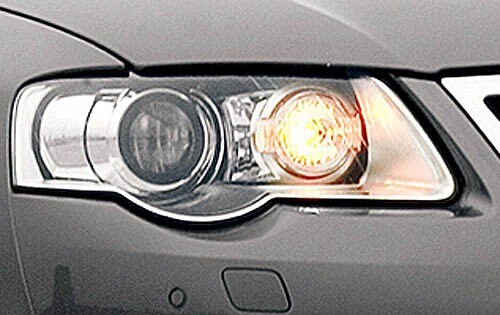A few months back I was walking back to my car in the parking lot and I walked past a guy who had some 360 degree turn signal bulbs on the front of his car. Even though they were 360 degrees, there was one angle I was looking - about a 45 degree angle from the corner of his car - in which I could not see the light very well at all. I think it's because even the so-called 360 degree LED bulbs still have a cylindrical shape with a flat top, meaning that there is a sharp, 90 degree transition between light-emitting surfaces. This is in sharp contrast (no pun intended) to an incandescent bulb, where the glass bulb takes on a rounded shape, and the filament(s) is visible from every angle. If you could get your hands on a rounded LED bulb, mimicking the shape of an incandescent bulb, i think your light output would be pretty decent, if not very good.
To me though, what it comes down to is this: LED bulbs in automotive applications thusfar are not really intended for reflector housings. Think about all of the LEDs you see on car exteriors: brake lamps, high-mount brake lamps, turn signals, marker lights, etc. The diode is almost always exposed outward, and is integrated into a specific spot. In other words, they are never used in reflector housing setups. Not that they can't be, but the housing would have to be designed specifically for LED bulbs (of which there are different types), just like housings/projectors vary quite a bit for halogen and HID setups.
To me though, what it comes down to is this: LED bulbs in automotive applications thusfar are not really intended for reflector housings. Think about all of the LEDs you see on car exteriors: brake lamps, high-mount brake lamps, turn signals, marker lights, etc. The diode is almost always exposed outward, and is integrated into a specific spot. In other words, they are never used in reflector housing setups. Not that they can't be, but the housing would have to be designed specifically for LED bulbs (of which there are different types), just like housings/projectors vary quite a bit for halogen and HID setups.

/002.jpg)
/026.jpg)
/089.jpg)


